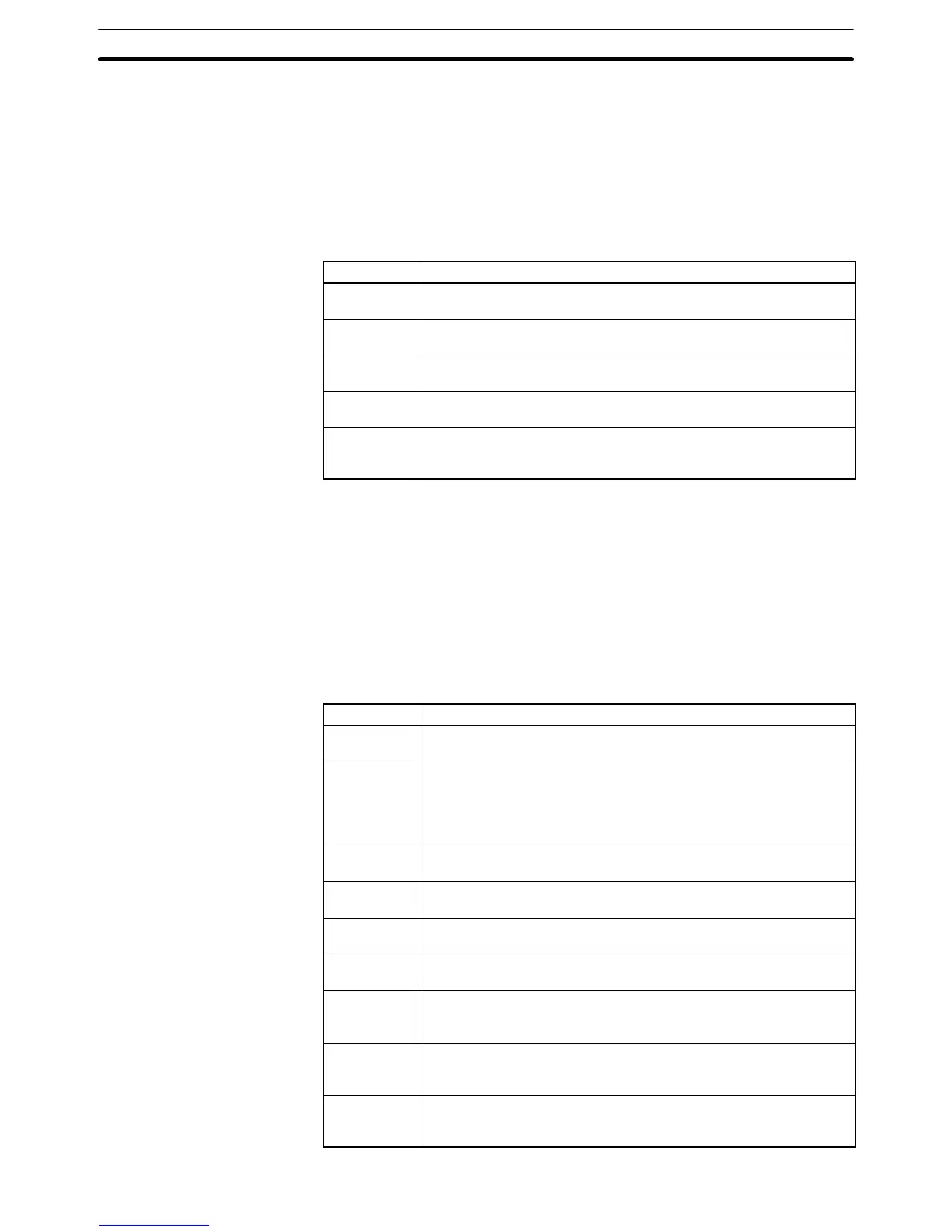113
4-2 Programming Console Operation Errors
The following error messages may appear when performing operations on the
Programming Console. Correct the error as indicated and continue with the
operation. The asterisks in the displays shown below will be replaced with
numeric data, normally an address, in the actual display. Refer to the
Ladder
Support Software Operation Manual
,
SYSMAC Support Software Operation
Manual: C-series PCs
, and
Data Access Console Operation Manual
for errors
that may appear when operating the LSS/SSS or a Data Access Console.
Message Meaning and appropriate response
REPL ROM An attempt was made to write to write-protected memory. Set the
write-protect switch (pin 1 of the CPU Unit’s DIP switch) to OFF.
PROG OVER The instruction at the last address in memory is not NOP(00). Erase
all unnecessary instructions at the end of the program.
ADDR OVER An address was set that is larger than the highest memory address
in Program Memory. Input a smaller address.
SETDATA
ERR
FALS 00 has been input, and “00” cannot be input. Reinput the
data.
I/O NO. ERR A data area address has been designated that exceeds the limit of
the data area, e.g., an address is too large. Confirm the
requirements for the instruction and re-enter the address.
4-3 Programming Errors
These errors in program syntax will be detected when the program is checked
using the Program Check operation.
Three levels of program checking are available. The desired level must be
designated to indicate the type of errors that are to be detected. The follow-
ing table provides the error types, displays, and explanations of all syntax
errors. Check level 0 checks for type A, B, and C errors; check level 1, for
type A and B errors; and check level 2, for type A errors only.
Message Meaning and appropriate response
????? The program has been damaged, creating a non-existent function
code. Re-enter the program.
CIRCUIT
ERR
The number of logic blocks and logic block instructions does not
agree, i.e., either LD or LD NOT has been used to start a logic
block whose execution condition has not been used by another
instruction, or a logic block instruction has been used that does not
have the required number of logic blocks. Check your program.
OPERAND
ERR
A constant entered for the instruction is not within defined values.
Change the constant so that it lies within the proper range.
NO END
INSTR
There is no END(01) in the program. Write END(01) at the final
address in the program.
LOCN ERR An instruction is in the wrong place in the program. Check
instruction requirements and correct the program.
JME
UNDEFD
A JME(04) instruction is missing for a JMP(05) instruction. Correct
the jump number or insert the proper JME(04) instruction.
DUPL The same jump number or subroutine number has been used twice.
Correct the program so that the same number is only used once for
each.
SBN
UNDEFD
The SBS(91) instruction has been programmed for a subroutine
number that does not exist. Correct the subroutine number or
program the required subroutine.
STEP ERR STEP(08) with a section number and STEP(08) without a section
number have been used incorrectly. Check STEP(08) programming
requirements and correct the program.
Level A Errors
Programming Errors
Section 4-3
